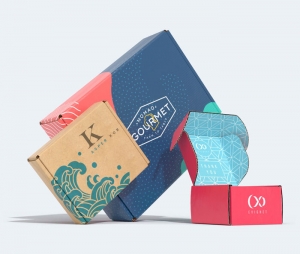please click here:
https://www.shdtimber.com/products.html
Introduction to Zebra Wood
Zebra Wood, also called Zebrano, is one of the most visually striking hardwoods available on the global market. Recognizable for its alternating dark and light stripes that resemble the pattern of a zebra, it has gained attention among designers, woodworkers, and furniture manufacturers alike. Beyond aesthetics, Zebra Wood offers a unique combination of durability, versatility, and rarity, which makes it an excellent choice for luxury applications. This article explores the origin, characteristics, uses, pros and cons, and how it compares to other popular hardwoods.
Origins and Natural Habitat of Zebra Wood
Zebra Wood primarily originates from Central Africa, with Cameroon and Gabon being the most notable sources. The trees belong to the genus Microberlinia, which thrives in tropical rainforests. These trees can grow remarkably tall, often exceeding 150 feet, with massive trunks that yield large planks.
Due to its limited growing regions, Zebra Wood has always been considered exotic. Its rarity contributes to both its desirability and its higher market cost compared to domestic hardwoods.
Physical and Mechanical Properties
Zebra Wood is not only beautiful but also mechanically impressive. Its striped grain is its most defining feature, with creamy or golden brown bases intersected by dark brown or nearly black streaks.
Key physical properties include:
-
Density and Hardness: Zebra Wood is heavy and hard, making it durable but also challenging to work with.
-
Grain and Texture: Typically interlocked or wavy, the grain can lead to tear-out when machining. The texture is coarse, which gives it a natural rugged feel.
-
Durability: It shows good resistance to wear but is susceptible to insect attacks if not properly treated.
-
Workability: While it machines well with sharp tools, the interlocked grain requires extra care.
Popular Applications of Zebra Wood
The exotic look of Zebra Wood makes it especially popular in industries where design and luxury play a central role.
Furniture Making
Zebra Wood's bold grain patterns make it ideal for statement furniture pieces such as dining tables, cabinets, and headboards. It is often used for veneers to balance cost while still showcasing its striking appearance.
Flooring
Though less common due to cost, Zebra Wood flooring creates a dramatic effect. Its hardness ensures longevity, though the pronounced grain can dominate interiors, requiring careful design balance.
Musical Instruments
Luthiers use Zebra Wood for guitar bodies and drum shells. Its tonal properties provide a balanced resonance, and its aesthetics add visual appeal.
Decorative Applications
Zebra Wood veneers, wall panels, and luxury car interiors highlight how the wood integrates into modern architecture and design.
Advantages of Zebra Wood
-
Unique Aesthetic: No two boards look the same, making every piece distinct.
-
Durability: Its hardness ensures resistance to daily wear.
-
Prestige: Exotic appeal enhances the value of finished products.
-
Versatility: Suitable for furniture, flooring, veneers, and instruments.
Challenges and Limitations
-
Cost: Due to rarity and import costs, Zebra Wood is significantly more expensive than domestic hardwoods.
-
Workability Issues: Interlocked grain can complicate machining and finishing.
-
Sustainability Concerns: Over-harvesting in Africa has raised environmental concerns, making certified sourcing essential.
-
Maintenance Needs: The coarse texture may require more frequent sanding and sealing.
Zebra Wood Compared to Other Exotic Woods
| Feature | Zebra Wood (Zebrano) | Teak Wood | Mahogany | Wenge |
|---|---|---|---|---|
| Appearance | Bold black-and-light stripes | Golden brown with straight grain | Reddish-brown, even texture | Very dark, almost black with fine grain |
| Durability | Very durable, hard, heavy | Highly durable, weather-resistant | Durable, easy to work with | Extremely hard, durable but brittle |
| Workability | Moderate, prone to tear-out | Easy to machine, oily surface | Excellent workability | Difficult due to hardness |
| Cost | High, due to rarity | High, especially premium Teak | Moderate to high | High, limited availability |
| Typical Uses | Furniture, veneers, instruments | Outdoor furniture, shipbuilding | Furniture, paneling, veneers | Flooring, high-end furniture |
Sustainability and Ethical Sourcing
Like many tropical hardwoods, Zebra Wood faces sustainability challenges. Illegal logging and habitat destruction pose serious threats. To counteract these issues, buyers should prioritize suppliers certified by organizations such as the Forest Stewardship Council (FSC). Using veneers rather than solid planks can also reduce overall demand for large timber harvests, extending the availability of this remarkable resource for future generations.
Maintenance and Care Tips
To ensure longevity and maintain its visual appeal, Zebra Wood requires proper care:
-
Regular Cleaning: Use a soft, damp cloth to remove dust and prevent buildup.
-
Protective Finishes: Apply oils or varnishes to enhance the natural grain and guard against moisture.
-
Avoid Harsh Conditions: Extreme humidity or dryness may cause cracks or warping.
-
Polishing: Occasional polishing brings out the bold stripes and maintains the luxury look.
Why Designers Choose Zebra Wood
In modern interior and product design, Zebra Wood is not merely a material—it's a statement. Its bold striped patterns immediately attract attention and lend a luxurious, high-end aesthetic. Designers often use it sparingly as an accent in combination with other woods or metals to achieve a balanced yet sophisticated effect.
Conclusion
Zebra Wood stands out in the world of exotic hardwoods due to its dramatic striped grain, durability, and prestige. While it poses challenges in terms of cost, sustainability, and workability, its appeal in luxury furniture, instruments, and decorative applications is undeniable. For designers seeking a bold yet natural material, Zebra Wood delivers a perfect mix of artistry and performance.
Frequently Asked Questions
1. Is Zebra Wood expensive?
Yes, Zebra Wood is considered a premium exotic hardwood, with prices higher than most domestic alternatives due to rarity and importation costs.
2. Can Zebra Wood be used outdoors?
While durable, Zebra Wood is not naturally weather-resistant like Teak, so it requires sealing and regular maintenance for outdoor use.
3. Does Zebra Wood change color over time?
Like many hardwoods, Zebra Wood can darken slightly with age and exposure to light, but its stripes remain visually distinct.
4. Is Zebra Wood sustainable?
Its sustainability depends on sourcing. Always choose FSC-certified suppliers to ensure responsible harvesting practices.
5. What are the best finishes for Zebra Wood?
Natural oils, polyurethane, and varnishes work well to highlight the contrast in Zebra Wood's grain while protecting its surface.
Article Summary
Zebra Wood, known for its striking black-and-light stripes, is a prized exotic hardwood used in furniture, flooring, instruments, and luxury interiors. This article explores its origins, properties, applications, advantages, and sustainability. Despite high costs and workability challenges, its prestige makes it a top choice for designers.






